No products in the cart.
Table of Contents
Philodendron Dark Lord is a must-have for gardeners and broad-leaved plant collectors who wish to bring in that sultry tropical vibe.
What is Dark Lord Philodendron?
Why is the Philodendron dark lord so in demand and expensive? Well, not only are they rare plants, but they are also highly coveted houseplants in the gardening world.
The ‘erubescens’ dark lord philodendron is a member of the Araceae plant family, encompassing at least 3000 known species.
The highly regarded foliage of this philodendron begins deep orange to blood-red, which can also transition to a deep dark green top complimented by its metallic maroon underside.
It’s native to the tropical canopies of Colombia and Panama but has been found abundantly growing in Northern Africa, the Philippines, and Seychelles. The dark lord philodendron is a hybrid variety of a fairly remarkable Philodendron erubescens imperial red.
How to Care for Philodendron Dark Lord?
Dark lord philodendrons are relatively easy to grow. Their huge bright red stems expand up to an inch in diameter. With their well-established root systems, they’re one of the easiest-to-maintain climbing tropical plants.
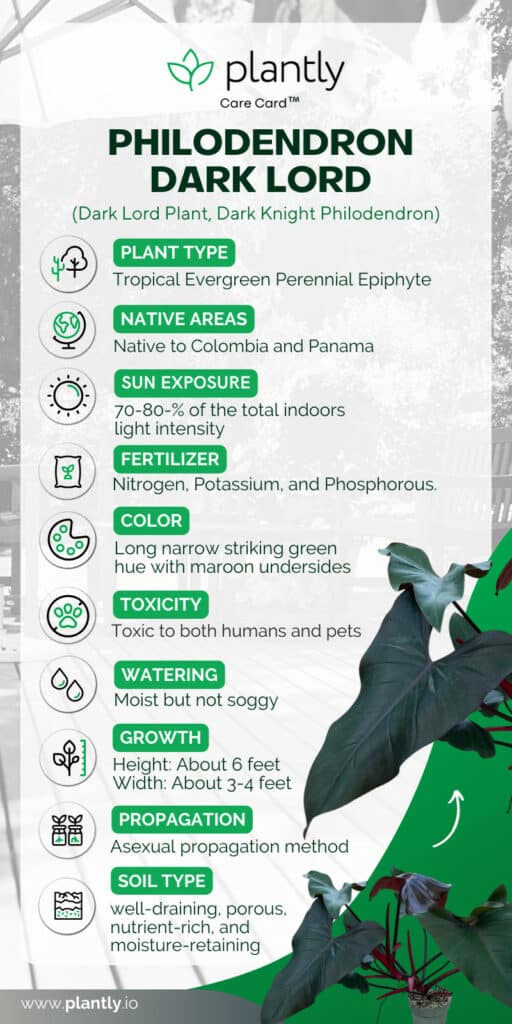
Ideal Potting Mix for Philodendron Dark Lord
A well-draining and rich organic mix is an ideal medium for your dark lord philodendron to flourish. Some examples of typical soil amendments include a mix of coco coir, perlite, orchid bark, vermicasts, pumice, and activated charcoal.
Work your way into making woody substrates, and remember to stay away from wet, muddy, and sandy soils. Are you wondering about the safe side of the ideal potting mix? Create one that has good drainage and adequate moisture retention elements.
Lighting Requirement for Philodendron Dark Lord
Most Philodendrons require at least 70-85% sunlight. But every plant is different, and you must monitor what your plant best responds to. Filtered sun proves ideal; partial shade and indirect light encourage the plant to grow well.
Providing 1-3 hours of direct sunlight in the morning wouldn’t hurt significantly if your plants are grown mainly indoors. This will benefit foliage formation, and the plant will unlikely scorch.
Watering Needs of Philodendron Dark Lord
As with most tropical plants, they prefer evenly moist, well-drained soil. Overwatering is a no-no, given the plant’s vulnerability to root rot.
How do you measure the plant’s watering needs? Do a simple feel test and see if at least 1 inch of the topsoil feels dry to the touch. You may also use a twig or any stick you may find and stick it to the base of the plant a few inches deep, away from the stem.
Observe the stick, and if any soil clings, it implies wet soil; dry soil would bring out brittle and compact residues. You want moist soil where you can quickly push the stick through but should not leave clumpy and mucky traces on the stick.
Temperature and Optimal Humidity for Philodendron Dark Lord

Given their subtropical nature, you want to maintain a warm ambient temperature, which encourages more luscious foliage and produces a richer maroon-dark green color.
Between 70°-85°F (21°C-29°C), and you’ll observe optimum growth. Anything above 60°F (15°C) would work just fine. Note, however, that less than 55°F (12.5°C) would result in stunted growth, wilt, and death of the plant tissues. Potted Philodendron plants can be brought inside in frigid zones, especially during the winter months.
When you choose to grow tropical plants, you’re correct to expect that they would love high humidity in the atmosphere. 70 – 85 % is ideal for philodendron dark lords, but they can also thrive under lower humid levels of 40 – 50 %.
Fertilizing Philodendron Dark Lord
Now that you know that moist soils are more significant when combined with rich organic matter, take it further and use a liquid fertilizer with a good amount of Nitrogen, Potassium, and phosphorus.
Using fertilizers from reliable sources, cheaper fertilizers, in the long run, damage the roots and may kill the plant due to the massive amount of heavy salts accumulating in the soil.
Propagation of Philodendron Dark Lord
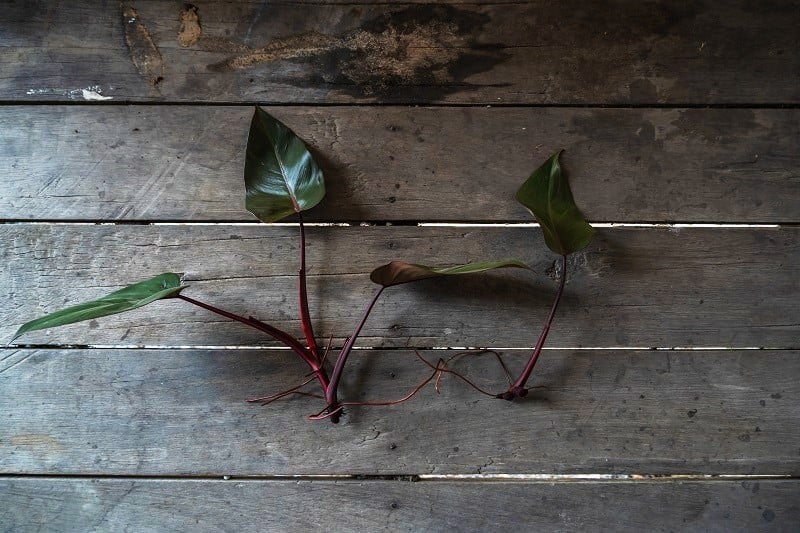
Taking a stem cutting and not a leaf cutting from a mature dark lord is said to be the easiest way to propagate the plant. Ideally, the healthiest dark lords produce a lot of aerial stems and roots, and you can easily cultivate them by cutting just below the node with lots of aerial stems formed.
After cutting, planting it in a rich, organic mix should be your next priority. A combination of moist coco coir, perlite, and vermicast should do the trick. You may dip the cuttings in a rooting hormone solution. Plant the stem on your prepared potting mix, and make sure the aerial roots are buried at least 2-3 inches into the mix.
Water thoroughly and place in an area under bright, indirect light.
Roots can usually take 3-6 weeks to develop, sometimes even longer for a potted plant. Once the dark lord philodendron becomes root-bound, you may repot the plant to your preferred indoor containers.
Philodendron Dark Lord Varieties
Dark lord philodendron plants are undoubtedly one of the most exquisite rare plants in the market. They’re a marvel to behold and offer a unique form and color ensemble from orange to deep dark green. Ponder upon some of the philodendron varieties that may also suit your liking below:
Philodendron Imperial Green and Red
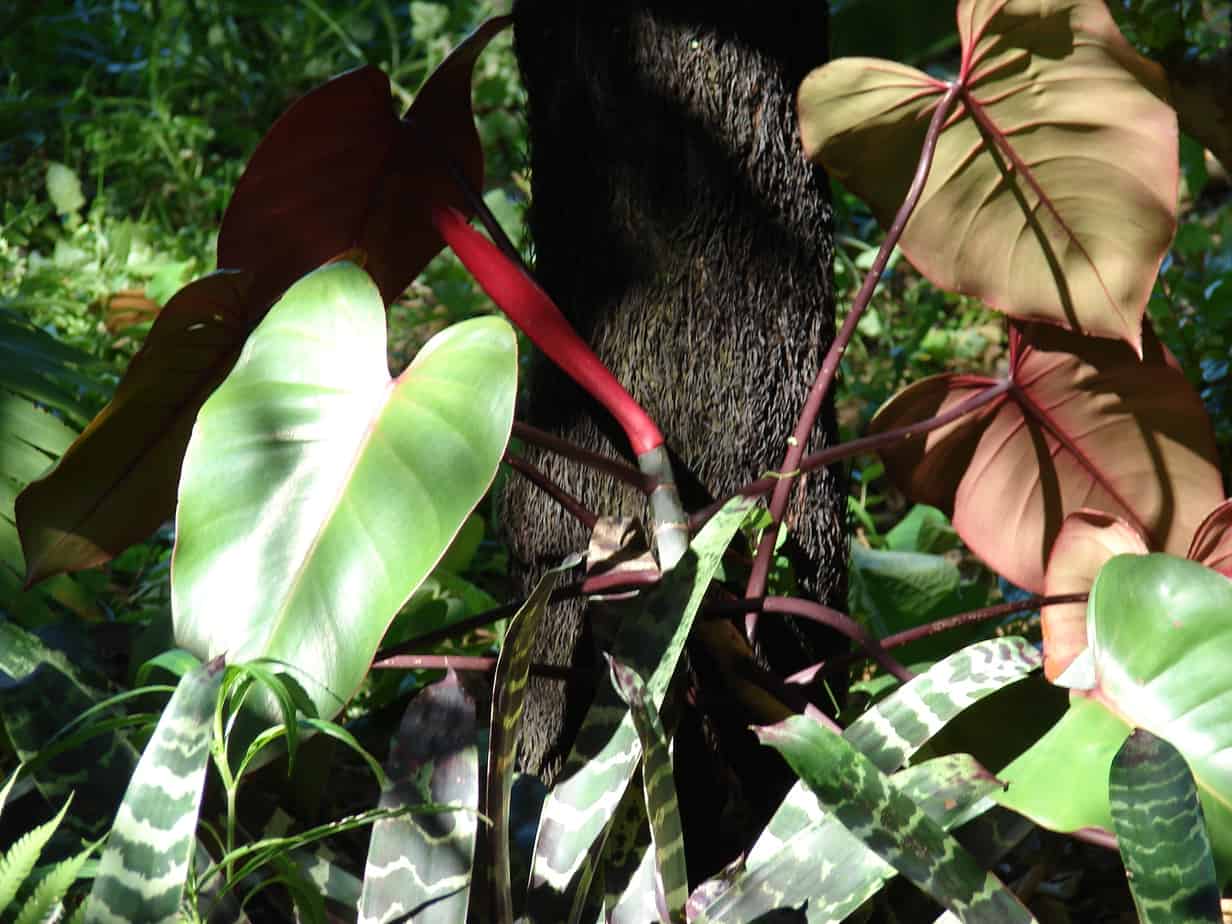
A plant standing upright with smooth glossy green leaves, these are some notable characteristics of the Philodendron Imperial green and Imperial red. Any reason why they have been named as such?
Well, the young leaves of the Imperial Red variety are bright red, turning to red-purple and eventually to dark green as they mature.
While an Imperial green philodendron would typically have dark green foliage.
Both of the imperial plants survive moderate to bright, indirect sunlight.
Philodendron Erubescens (aka, Pink Princess Philodendron)
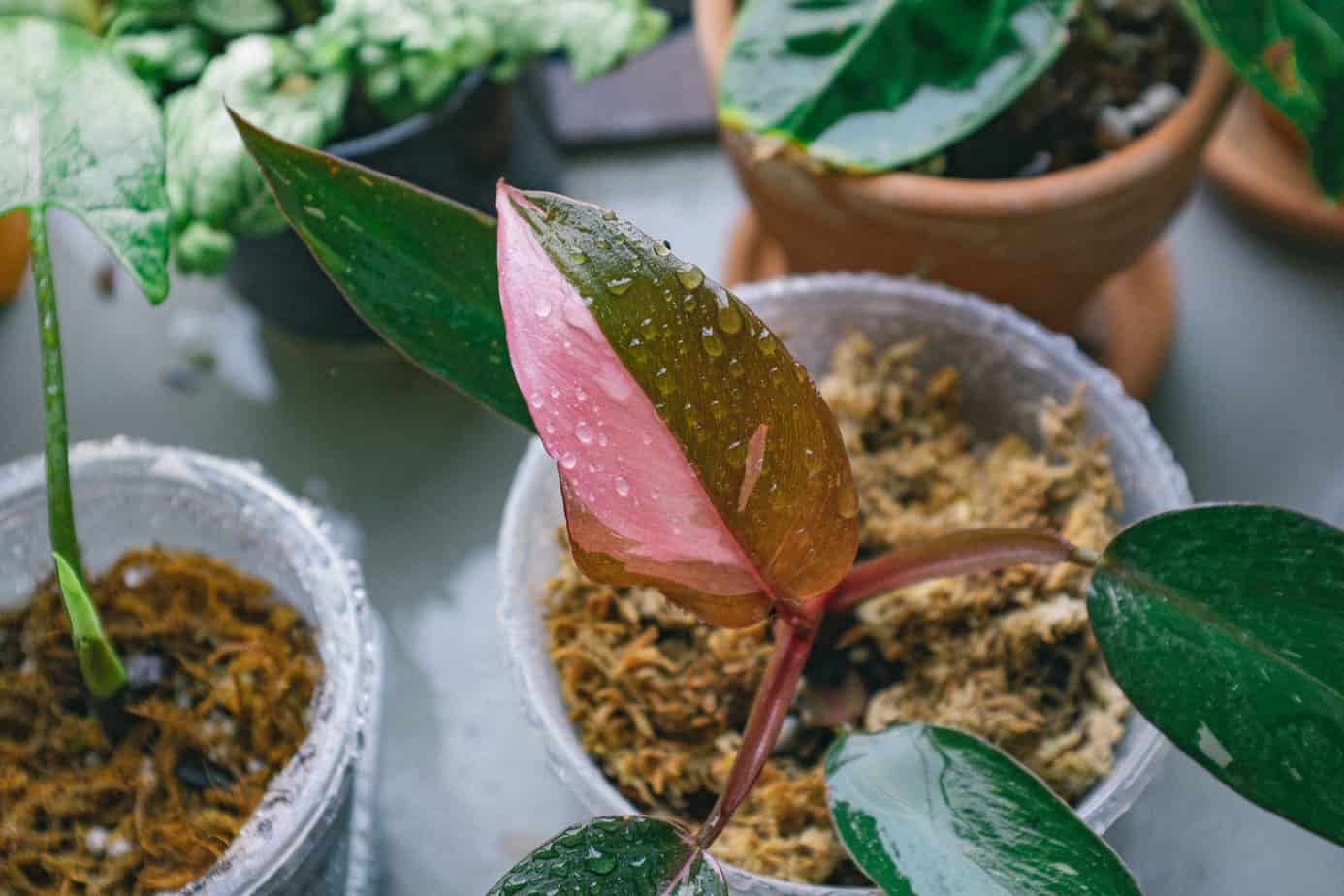
Being one of the most stunning varieties of philodendrons, Erubescens boasts variegated foliage that comes in shades of pink and dark green. To maintain their vibrance, be sure to place them in a spot that receives an ample amount of light.
Indoor plants thrive with the maintenance of relatively high humidity levels (particularly of those with subtropical origin). And since most homes have dry air, regular misting or use of pebble trays are recommended occasionally.
Philodendron Brandtianum
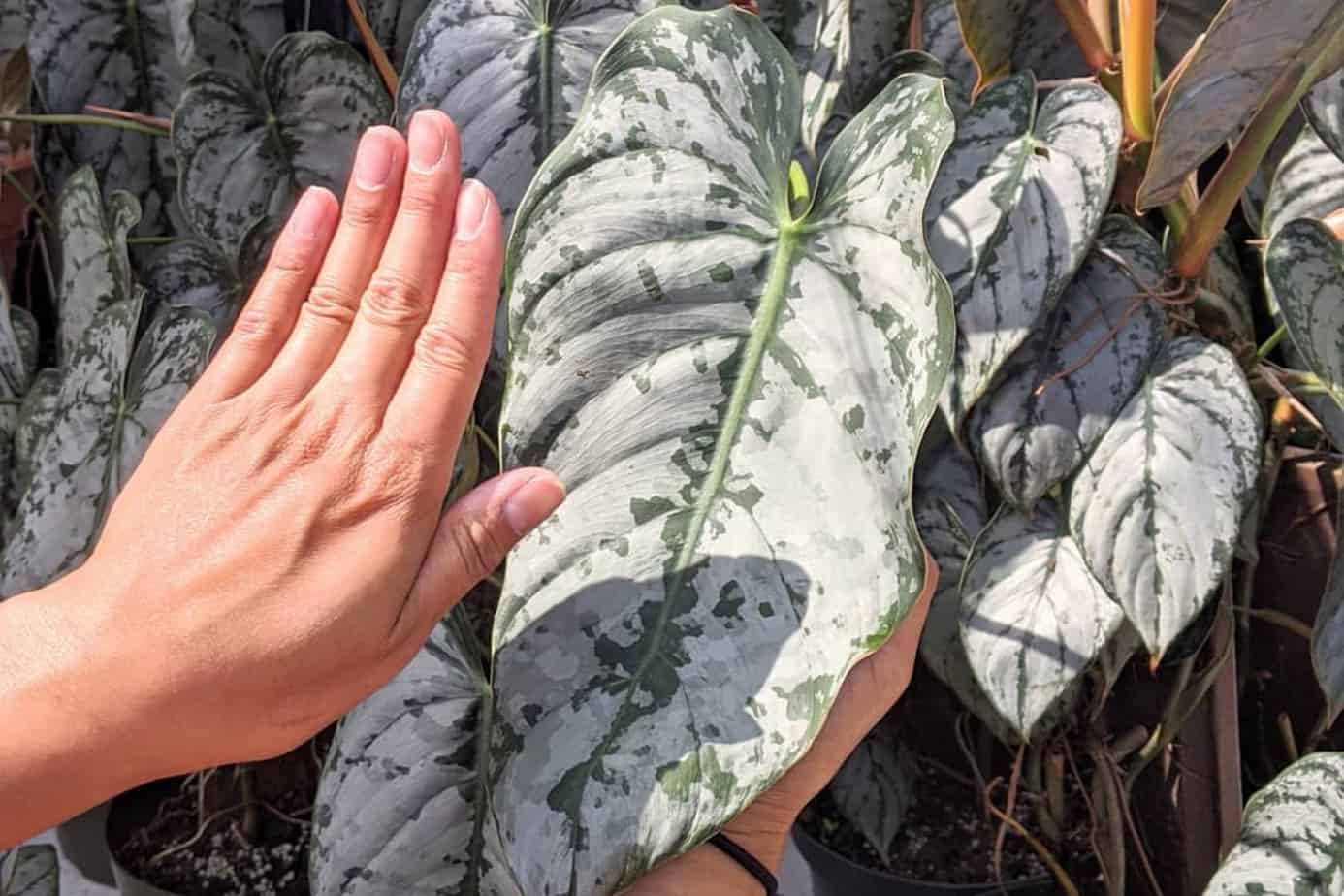
Brandtianum Philodendron features a lovely ensemble of emerging heart-shaped leaves with a yellow-orange tone. This changes later on into dark green and silver as they mature. This gives the plant its fascinating silver striations.
The plant has a complete and upright habit and would certainly do well under medium indirect light. But if you wish to highlight more its variegation, see to it that the plant receives bright, indirect light.
Philodendron Dark Lord Diseases and Pests
While the leaves of Philodendrons typically change colors, there are early signs of disease that you can look out for. For example, if all the leaves change color or turn yellow, your plant may have a problem.
Oftentimes, this is associated with overwatering, underwatering, high temperature, and nutrient deficiency. When such a symptom becomes visible, some changes may need to be made to the current cultural management employed.
Other symptoms, such as browning the leaf edges, usually indicate underwatering. Meanwhile, overwatering may also exacerbate some other diseases that can kill the plant if not addressed early.
Erwinia Blight Disease is a form of bacterial infection caused by overwatering that results in leaves having wet, transparent, and mushy lesions. It spreads fast, so the infected leaves should be pruned immediately.
After pruning, it is recommended to change the potting mix to a new one and be mindful of the spaces between plants.
This will allow the infection to subside and dry the leaves much faster.
Frequently Asked Questions
Most philodendrons are known to be great climbers, this is made possible by their modified roots that can cling and wrap around trunks of trees. As they reach the canopy, the plant would then transform into epiphytes.
Being a non-compact species, the dark lord philodendron can grow up to 6 feet and 3 – 4 feet wide. So invest in the right size for both patio and indoor containers. Whichever you choose, make sure that there is sufficient room as they will eventually take lots of space!
Growth generally becomes optimum as long as you provide any plant with the proper care and requirement they need.
For the Dark lord philodendron, just be sure to give the plant sufficient sunlight, avoid overwatering, feed them with some balanced fertilizer when needed and you’re good to go!
A rare and highly coveted tropical plant, the Philodendron dark lords are not an easy one to find. But worry not, for Plantly, has your back!
Whether you want to buy, sell or simply reach out to other plant enthusiasts, Plantly is the right place to be!


